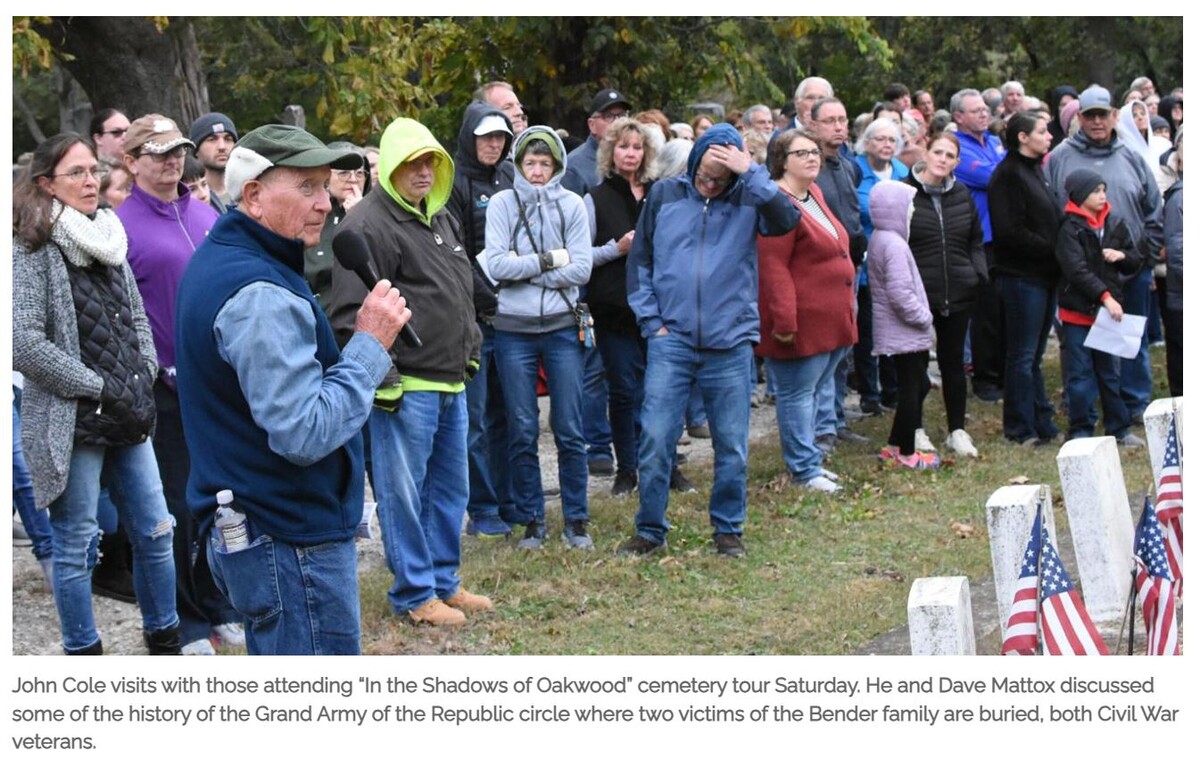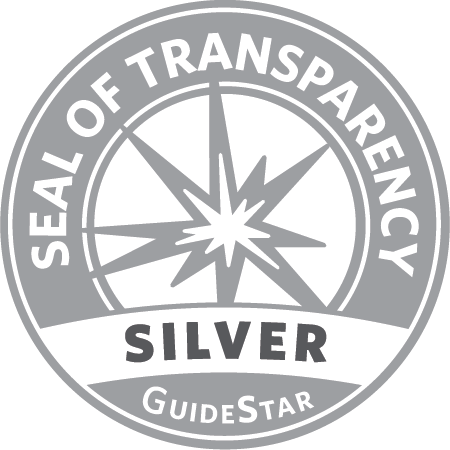About 200 attend tour of Oakwood Cemetery

More than 200 people attended Saturday’s 90-minute tour of Oakwood Cemetery and learned about historic structures in the cemetery and some of the people buried there.
Dave Mattox and John Cole told the stories during the “In the Shadows of Oakwood” tour after conducting research on the cemetery and the people. Both are on the committee hoping to preserve the cemetery and renovate its Grand Army of the Republic circles.
The walking tour included 17 stops plus information on the retaining walls at the entrance and the gate. The gate was built in 1911 for $650 by Jacob Medaris, a stone craftsman who has a lot of his work on display at the cemetery.
Charles Jones built the 350 feet of sandstone retaining walls at the entrance for $300, which doesn’t seem like much these days.
There used to be a caretaker’s cottage near the entrance where the cemetery sexton, or caretaker, could live. =
The building that remains at the entrance is used as an office and was built in 1939 by the National Youth Administration, Mattox said.
Dr. George Maser’s stone was the first gravesite visited on the tour. He was an eye surgeon who moved to Parsons in 1882 after being educated in New York and across the globe. He invented artificial pupils, did eye tattooing and developed a surgical technique for the time called the Maser method.
Dr. Maser’s headstone is in the shape of a tree stump.
“He had a lot of compassion for people,” Cole said. He treated those who could not afford eye treatment for free.
At the top of the gravestone, unseen, is a squirrel holding a nut. Mattox said this symbolizes spiritual striving and meditation.
Jacob Medaris is buried in Oakwood with an unassuming headstone. He was a stone mason and learned his craft at a rock quarry near the Neosho River. He had a monument company in Parsons at 1718 Broadway for more than 35 years. He lived to be 90 years old.
Mattox said that in Medaris’ lifetime, he built more than 1,000 monuments, most of them between 1900 and 1935. He built the cemetery entryway, the chapel in the Coffey addition and the Edwards mausoleum along with other mausoleums and other things around town, from sidewalks to the gates at Forest Park near Corning.
The G.A.R. circles were on the tour as well. Two victims of the Bender family are buried there. They survived the Civil War but not the Benders. They are W.F. McCrotty and H.F. McKinsey.
Other sites visited included:
— James Heacock, a physician who practiced in Parsons. A street in Parsons on the east side of Forest Park is named for him.
— Charles Wickersham, a fruit farmer considered an authority on fruit. His heavy gravestone was known as the moving stone for a period of a few years. The cemetery workers would notice it getting moved at various times. Cole and Mattox said it is a heavy stone, too. The culprit was never identified but the problem stopped when the stone was attached permanently.
— Felix Lucand, a native of France who moved to Kansas before it was a state and was in Parsons when it was founded. He owned restaurants and hotels.
— The potters field holds the remains of some 1,100 people, many buried without a headstone. The city stopped using it in 1932 and the county bought land and created another potters field. Many of the people buried in the potters field didn’t have family to claim them and had no assets. Among them are people who died in the railroad yard, in rooming houses and in disasters.
“A lot of people in a small area there,” Mattox said.
— The Reynolds family moved to Parsons in 1872 from Lawrence. Major George Reynolds was a land agent for the Katy Railroad and was also a government agent for Indian tribes. He and his wife had seven children. The tragedy in the family is that the entire family died within a decade.
— Hilda Aliza Holmes, a 9-month-old daughter of Dr. William Court Holmes and Aliza Holmes, was the first person buried in Oakwood. She died in June 1872 of smallpox and was buried the same day she died.
— Mattox and Cole also told about an old cemetery at 14th and Briggs in the Weeks addition. Families tried to arrange to move their loved ones to Oakwood when it opened. Most of the gravesites were moved, “I don’t think all of them got moved. So if you live in that area…” Mattox said.
— Coffey chapel. A family left the city money to build this chapel to be used as a receiving vault. The city has used it as storage. The Oakwood committee hopes to make it a visitor’s center.
The Edwards mausoleum was the last stop on the tour. The vault was built by Jacob Medaris for E.H. Edwards, a Parsons businessman who was also president of Commercial Bank for a time. The mausoleum is built of granite and other materials. To build the same structure today would cost $1 million, Cole told those on the tour.
Mattox expected 100 people on the tour but was pleased with the turnout. The Oakwood committee had a table where people could donate money to the preservation of the cemetery and its G.A.R. circles.
“As far as I’m concerned, it’s the most significant historic site we have left in Parsons if not in Labette County,” he said.

